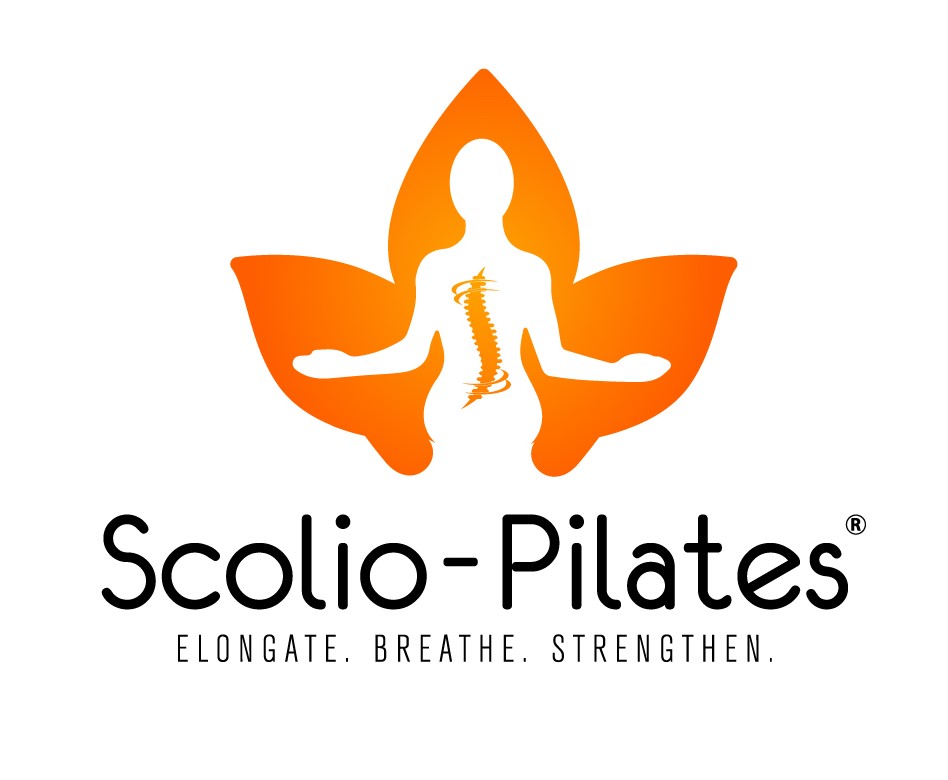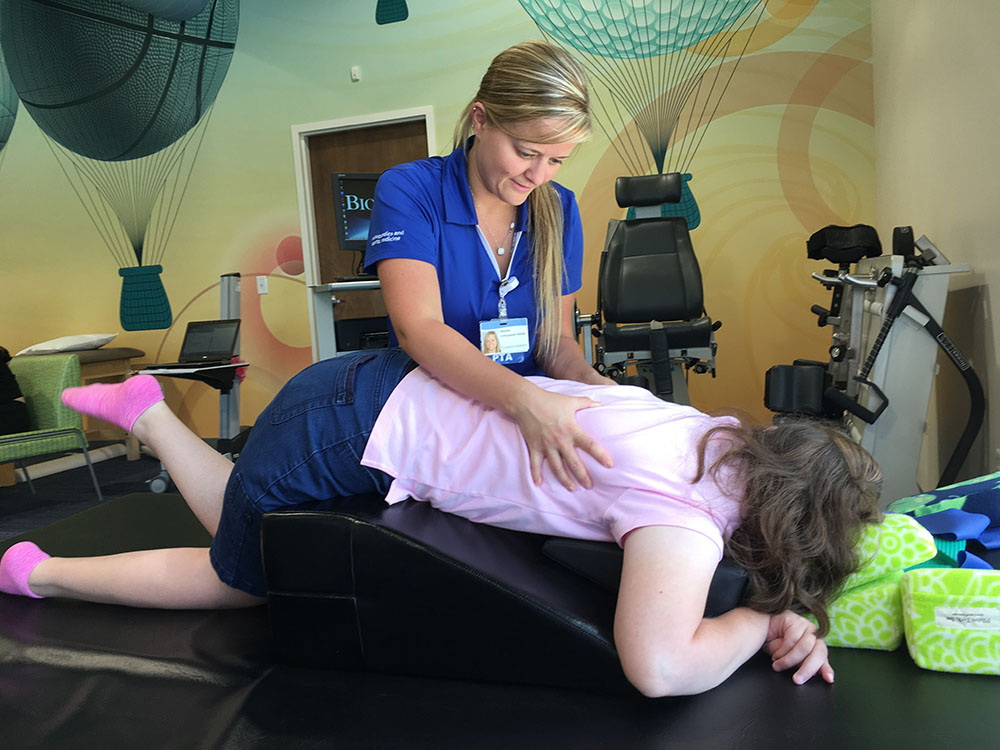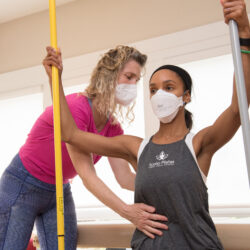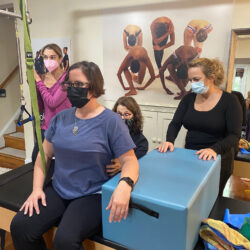By Karena Thek
In the early phases of his work, Joseph Pilates did a lot more than instruct fitness and athletic training. He was on the cutting edge of rehabilitation. Physical rehabilitation, up to the early 20th century, was seen as something that came with rest, not movement. Joseph Pilates was at the forefront of changing that paradigm as he used his movement techniques (Contrology) to rehabilitate wounded soldiers in a hospital where he was an orderly during WWI. Later in New York, while his work became known for its effectiveness in rehabilitating dancers, he also demonstrated his rehabilitative genius through his work with professional dancer Eve Gentry—helping her to recover from a radical mastectomy that removed most of her left pectoral muscle. His results gained the attention of Dr. Henry Jordan, Chief of Orthopedics at Lenox Hill Hospital. Dr. Jordan referred many patients to Joseph Pilates but was unable to secure Pilates a position at Lenox Hill Hospital, possibly due to a lack of credentials.
It’s interesting to see how Pilates is continuing to evolve in the 21st century and that we are at times struggling with the same recognition for the work that Joseph Pilates struggled with. One instructor at a time, one patient at a time, we still struggle for acceptance in the medical community, which is why recent events in my own work still leave me shaking my head in bewilderment. If it’s okay, I’d like to share that story with you in the hope it will encourage you to continue to push for the acknowledgment of Pilates in your community as the rehabilitative powerhouse that it is.
Scolio-Pilates® works with Children’s Hospital
About 9 months ago, I received a phone call from Karen Kleiner, a student who had attended an Introductory Scolio-Pilates® course 3 months prior. She said she had been talking to some people at her local children’s hospital about Scolio-Pilates, and they had shown quite a bit of interest. Before she talked to anyone else at the hospital, Karen wanted to know if I was interested in bringing Scolio-Pilates to Dayton Children’s Hospital, in Dayton, Ohio. Her question left me speechless — I said, “Yes. Yes, I would be interested.”
I got off the phone and turned to my father… I was living in that pause between laughing and crying, where everything feels a little numb, a little unreal. I had memories flashing in from 6 years previous when I was also visiting my parents.
I had just written Scolio-Pilates, Exercise for Scoliosis, A Pro-Active Guide, and I was being interviewed by two orthopedic surgeons on a nationwide radio show about my new book. One of the doctors asked why I had written the book. I said that in addition to the current management of scoliosis (observation, bracing, and surgery), I was attempting to add a 3-dimensional exercise program for assisting in the management of scoliosis. I wanted to add exercise to the offerings, not detract. I wanted patients to have a resource for feeling their very best while they were, first and foremost, following the advice of their medical team. The doctor leading the show stopped me. He told his listeners that exercise was not a viable option for scoliosis and ended my interview early.
Leaving my memory of that interview behind and coming back to the present, I saw my dad still looking at me over his glasses. He asked, “What was that phone call all about?” I said, “I think there’s a children’s hospital that wants to talk about having a Scolio-Pilates program at their hospital.” My dad looked confused and asked, “What? Why?”. I explained it would be a 3-dimensional exercise program for patients with scoliosis. My dad said, “Well, but why are they calling you? Isn’t there anyone else who does what you do?” We both laughed. Well… actually, there aren’t a lot of people that do what I do, but I told my dad, “Trust me. We are trying to change that.”
Once the ball got rolling at Dayton Children’s, the vice-president and chief of ambulatory care, Ben Goodstein, kept the ball rolling and became a colleague with a formidable presence and tremendous support by authorizing the Scolio-Pilates program at Dayton Children’s. But it was Ann Smith, DPT, MS, OSC, and manager of the orthopedics physical therapy department who had a vision of what this would mean for her patients and possibly for the future of managing scoliosis. She has managed the details of the program in her physical therapy department and has a vision for Scolio-Pilates that includes a 5-year longitudinal study.
To get the program started, my first visit to Dayton Children’s was in July. I came in for meetings with the doctors and medical teams to introduce the Scolio-Pilates program. I also spent the weekend training their physical therapy team through the Scolio-Pilates Introductory course. By the way, I spent this whole weekend asking myself, “Is this real?” Is Scolio-Pilates really going to be part of a children’s hospital?” It really was so hard to imagine.
In August, I went back to spend 4-weeks doing one-on-one training with the therapists to guide them through their individual work with their patients. The doctors referred the patients to the Scolio-Pilates program, and the therapists worked one-on-one with me as we worked through the problem-solving questions that would lead to the best home exercise program for each patient. The patients were sent home with handouts that described their exercises and allowed for the uniqueness of their curves. They brought these handouts back during each visit so we could adjust/add/modify them as they grew in their own ability and knowledge. The therapists and I sat down together after every patient to discuss their questions about the work, practice the techniques, and create a plan for their patient. Now, the reality of Scolio-Pilates in the hospital was becoming very real: the patients, the therapists, the staff, and the doctors; everyone was working at making this not only a reality but a very successful reality. On September 15, 2017, Ann Smith presented the program to the community at Dayton Children’s annual orthopedic symposium. And with that, Pilates, in the form of Scolio-Pilates, was officially being offered as a fourth management option for those being treated for scoliosis.
That’s my story. This is a short story about gaining recognition from the medical community for the benefits of Pilates. Joseph Pilates started his work, not just with athletes, but with those who were injured and physically struggling. He was at the cutting edge of the birth of rehabilitative work. We honor his memory and honor the work he began so brilliantly, each time we help one client towards better health, each time we work with a client that has all but given up on their chances to move well again, each time our clients or we speak, to someone in the medical community about the work we are doing. One client, one medical practitioner, one hospital at a time, and the work of Joseph Pilates thrives and continues to live out one of his most famous quotes:
“Not only is health a normal condition, but it is our duty, not only to attain it, but to maintain it.”—Joseph Pilates
We do our duty as Pilates Instructors when we are there to help guide others toward that attainment. I wish you the best of luck; I know you will do great work.
Whether you are someone living with scoliosis or a professional helping those with scoliosis, join our Scolio-Pilates On Demand here. You will have two weeks of free scoliosis-specific exercises with a live class every Thursday at 3 pm ET (New York, USA) and access to over 100 classes. Then, it’s time to take control. Be a Scolio-Mover!”
Are you a professional looking to serve those with scoliosis? Learn the steps towards becoming an Authorized Scolio-Pilates Practitioner.



